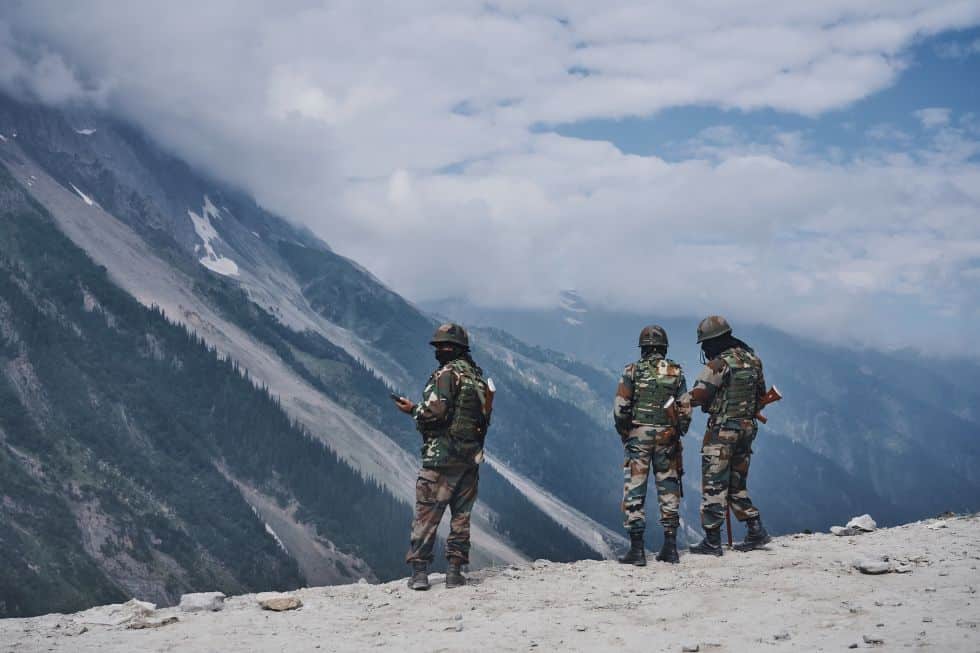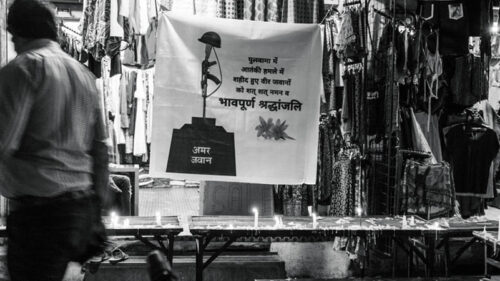The guns have fallen silent along the Line of Control (LoC) between Pakistani- and Indian-administered Kashmir. A fragile ceasefire is in place, but this calm is unlikely to last. Pakistan has a long history of breaking ceasefires and provoking conflict. India’s recent military operation, Operation Sindoor, forced a temporary de-escalation and pushed Pakistan onto the defensive. Yet this tactical success should not breed complacency. The underlying tensions remain unresolved, and future flashpoints are all but inevitable. India must urgently move beyond reactive measures and prepare a calibrated, forward-looking strategy to address the next wave of threats before they emerge.
A history of deception and conflict
Pakistan’s obsession with India and extremist ideologies motivates its security apparatus to engage in misadventures. In past wars, from the Indo-Pakistani war of 1971 to the Kargil War of 1999, Pakistan refused to learn lessons and instead instilled a false peace or escalated anti-India rhetoric. For decades, Indo-Pakistani relations operated in the shadows of calculated diplomacy. After 2016, Pakistan increased anti-India rhetoric and began using fundamentalist methods and terror networks.
Pakistan cannot match India’s firepower. Despite this, Pakistan takes the risk of limited fighting to counter India’s responses. When conflict crosses a threshold, Pakistan pushes back and initiates a brief diplomatic pause. Following the 2001 Agra Summit, India and Pakistan began a normalization process, which failed. Six months later, terrorists attacked the Indian Parliament. India launched Operation Parakram, leading to a standoff and a ceasefire in November 2003. Just two months after the ceasefire, terrorists attacked Jammu Railway Station, killing four soldiers and six civilians and injuring others.
In April 2005, India and Pakistan agreed to open the frontier dividing Kashmir. The same year, they launched a bus service across Kashmir. Two months later, five Lashkar-e-Taiba terrorists attempted to attack Ram Janmabhoomi. Three months after that, Delhi experienced serial blasts. All of this occurred within five months of opening a major land route.
Key attacks and security threats
Following its defeat in the 1999 Kargil War, Pakistan launched a deceptive peace campaign. While peace talks continued, Pakistan reviewed and escalated its terror strategy. It moved from cross-border terrorism to radicalization and psychological warfare. Pakistan aimed to disrupt Indian communal harmony and radicalize Indian Muslims, especially youth. It reorganized the weakening Students Islamic Movement of India (SIMI) and developed its offshoot, Indian Mujahideen. The Bangladeshi branch of Harkat-ul-Jihad-al-Islami (HuJI) helped found Indian Mujahideen. The group soon became a security nightmare, carrying out 10 bombings across India over five years. The first was the Varanasi bombing at Dashashwamedh Ghat.
In 2015, Indian Prime Minister Narendra Modi made a surprise visit to Pakistan, creating a brief detente. However, during this period, the Jaish-e-Mohammed group revived. Then Prime Minister Nawaz Sharif had earlier ordered Pakistan’s Counter Terrorism Department to crack down on the group. Army Chief General Raheel Sharif intervened to ease the crackdown. Weeks after Modi’s visit, Jaish attacked the Pathankot Air Force base in January 2016. In September 2016, Jaish conducted the Uri attack. India responded with surgical strikes against launchpads. Two months later, Jaish attacked the Nagrota Army Base, killing seven soldiers. Sharif responded with a warning: “Pakistan is also capable of surgical strikes. Don’t mistake silence for weakness.”
In 2018, Pakistan’s military attempted backchannel talks with India to avoid regional isolation. During this outreach, Hizbul Mujahideen kidnapped and killed three Jammu and Kashmir police officers. They posted a video warning others to resign or face death. India rejected the peace talks.
The anatomy of deceptive peace
Pakistan understands that its battlefield endurance is limited. It lacks conventional strength to deter India’s offensive or to hold territory. Therefore, Pakistan uses a strategic pause to shift from conventional to sub-conventional warfare. This pause allows Pakistan to avoid continued battlefield losses while appearing to pursue diplomacy.
Pakistan’s deceptive peace strategy has four elements:
- Gather diplomatic support on the global stage
- Repair damages by securing financial and defense aid
- Prevent regional isolation through diplomatic engagement with India.
- Shift to sub-conventional methods — terror strikes — to retaliate against India.
Pakistan also uses Afghanistan to shape strategic depth. The deceptive strategy resembles what former Indian Air Force Chief Anil Chaudhary described as the “Triple R” strategy: rearticulate, reorganize and relocate.
Pakistan retaliates through sub-conventional means while projecting diplomacy. It uses peace talks to buy time and freeze conflict. In the background, Pakistan aims to bleed India through terror and keep fundamentalist ideology alive. Its attempts at detente often fail. Either terror groups sabotage peace or the Pakistan Army blocks progress.
India’s Operation Sindoor showed credible power by targeting Pakistan’s air bases beyond Pakistan-occupied Kashmir. Pakistan requested a ceasefire. This request should not be seen as a genuine attempt at peace. Instead, it is another pause for Pakistan to recover and regroup.
A strategic path forward for India
General Asim Munir’s promotion to Field Marshal and his recent warning that “water is Pakistan’s red line” show increasing hostility. India has set tough conditions for talks that Pakistan is unlikely to meet. Without talks or a lasting ceasefire, Pakistan may resort to another terror attack in Jammu and Kashmir or elsewhere.
Masood Azhar’s brother, Talha Al-Saif Alvi, a leader of Jaish, recently issued violent threats in the group’s digital magazine. He urged Pakistan’s military and intelligence to allow full-scale jihadist operations against India. He warned: “If you stand in our way now, you will be wiped from the face of the earth.” He also threatened Indian Prime Minister Modi with mass violence against Hindus.
Pakistan’s actions suggest that another attack is likely. India must act to paralyze Pakistan’s capacity to retaliate, both militarily and sub-conventionally. India should use covert capabilities to carry out preemptive strikes. The situation would weaken Pakistan’s ability to regroup or escalate its efforts. Given the nature of Pakistan’s current leadership — more deceptive and extreme than before — India must stay ahead of the threat.
[Liam Roman edited this piece.]
The views expressed in this article are the author’s own and do not necessarily reflect Fair Observer’s editorial policy.
Support Fair Observer
We rely on your support for our independence, diversity and quality.
For more than 10 years, Fair Observer has been free, fair and independent. No billionaire owns us, no advertisers control us. We are a reader-supported nonprofit. Unlike many other publications, we keep our content free for readers regardless of where they live or whether they can afford to pay. We have no paywalls and no ads.
In the post-truth era of fake news, echo chambers and filter bubbles, we publish a plurality of perspectives from around the world. Anyone can publish with us, but everyone goes through a rigorous editorial process. So, you get fact-checked, well-reasoned content instead of noise.
We publish 3,000+ voices from 90+ countries. We also conduct education and training programs
on subjects ranging from digital media and journalism to writing and critical thinking. This
doesn’t come cheap. Servers, editors, trainers and web developers cost
money.
Please consider supporting us on a regular basis as a recurring donor or a
sustaining member.
Will you support FO’s journalism?
We rely on your support for our independence, diversity and quality.








Comment